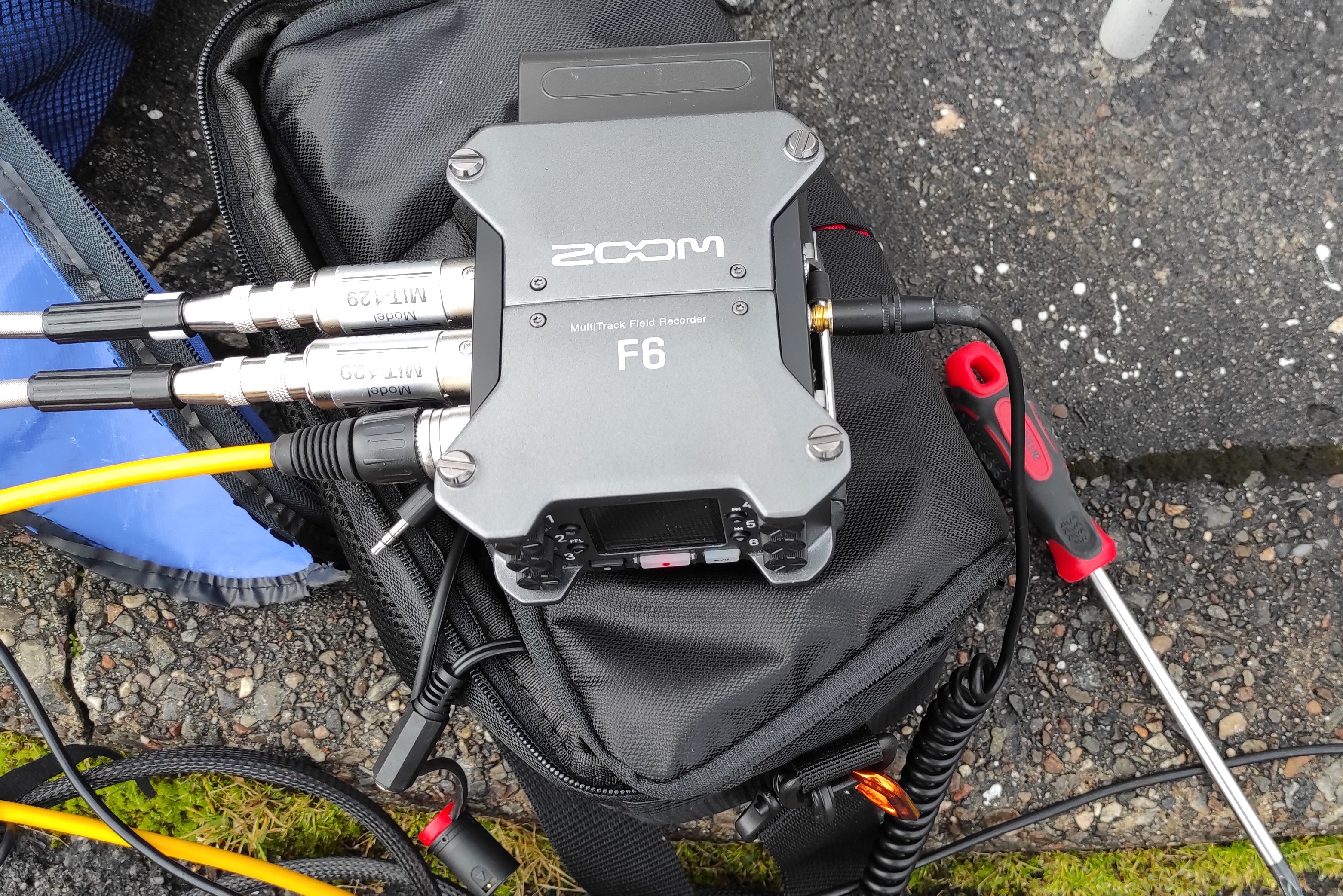Contact microphones can be used to reveal the fascinating sounds within solid objects. Clip them to guy wires, gates, bridges, or whatever, to hear sounds that would usually be hidden. They can be remarkably versatile; contact mics share similar technology to some hydrophones, and indeed some mics can double as both.
This whole area is covered in detail in my video episode "Sound in Contact". To complement that episode, this is a quick test of three mics: a Dolphin Ear hydrophone, which is usable as a contact mic; a JRF contact mic; and a JRF hydrophone, just to see how well it would work as a contact mic.
The
Dolphin Ear hydrophonesDolphin Ear Hydrophones
Product page for the Dolphin Ear Hydrophones. (Dolphin Ear)
http://dolphinear.com/ are
(as the name implies) marketed mainly as hydrophones. However, they
are also described as being usable as contact mics‚ and in fact I've had
a lot of fun using them this way.
Two versions are available: the DE200 version has a preamp/headphone amp, whereas the Pro version has an XLR plug which connects directly to a recorder with balanced inputs. Unlike most piezo-electric mics, the outputs of the Pro mics are low impedance, and so can go directly to a recorder without any adapter. A Pro hydrophone was used in this test.
The JRF contact micsContact Microphones
Product page for the JRF Contact Microphones. (jez riley french)
https://jezrileyfrench.co.uk/contact-microphones.php are
made by Jez Riley French, who is himself a sound (and other media) artist.
They come in Basic and Pro versions, but the price is remarkably reasonable
either way. This test used a Pro mic.
One thing about the JRF contact mics is that they do require impedance adapters (also sold by JRF). The mics themselves come with ¼" plugs, which go into the impedance adapters, which end in XLR plugs, which in turn go directly into a recorder's balanced input.

The JRF hydrophonesHydrophones
Product page for the JRF Hydrophones. (jez riley french)
https://jezrileyfrench.co.uk/hydrophones.php are
similar to the contact mics, but (obviously) specifically designed for use
in water. They also come in Basic and Pro versions, and again the price is
hard to argue with. They use the same impedance adapters as the contact
mics.
Although these are technically hydrophones, I decided to try one as a contact mic, just to see what would happen. Again, this test used a Pro mic.
One thing I've heard, and kind of felt, about the JRF contacts, is that
they have good bass reproduction. So I decided to try a test of something
with solid bass. I found these huge steel gates with
amazing bass reverberationLocked Up but Still Singing
Recording of reverberations in a big steel gate. (Atticus Lake)
https://atticuslake.bandcamp.com/track/locked-up-but-still-singing,
and decided that they would make a great test. (That track was recorded with
two JRF C-Series Pro contact mics.)
The mics under test were clipped to the bars of the gate. Since I only have 2 impedance adapters, I tested the mics singly, in mono.
These excerpts were recorded exactly in parallel, using three inputs on the recorder, so you can compare like for like.
Dolphin Ear |
|
| Recorded through the Dolphin Ear Pro hydrophone. |
|
JRF Hydrophone |
|
| The exact same recording as above, but recorded through the JRF D-Series Hydrophone. |
|
JRF Contact Mic |
|
| The exact same recording as above, but recorded through the JRF C-Series Pro Contact Mic. |
|